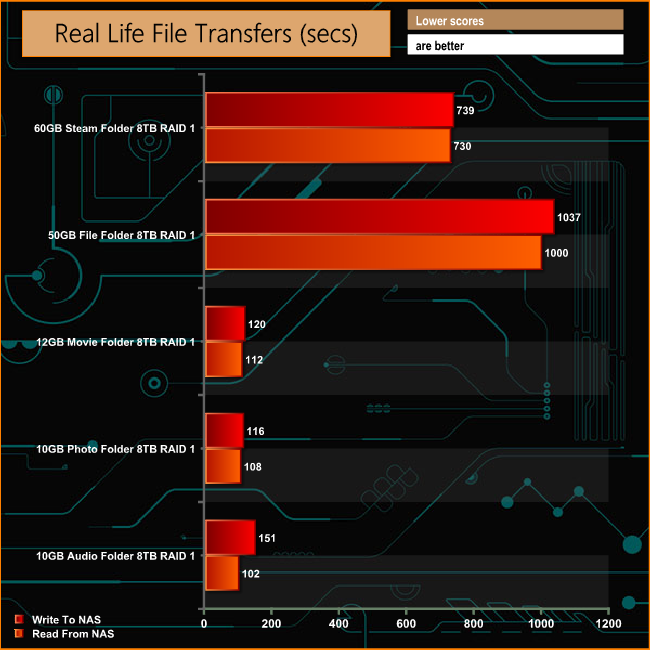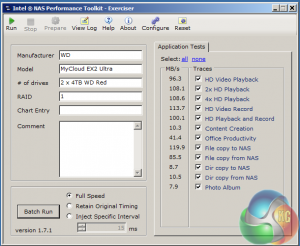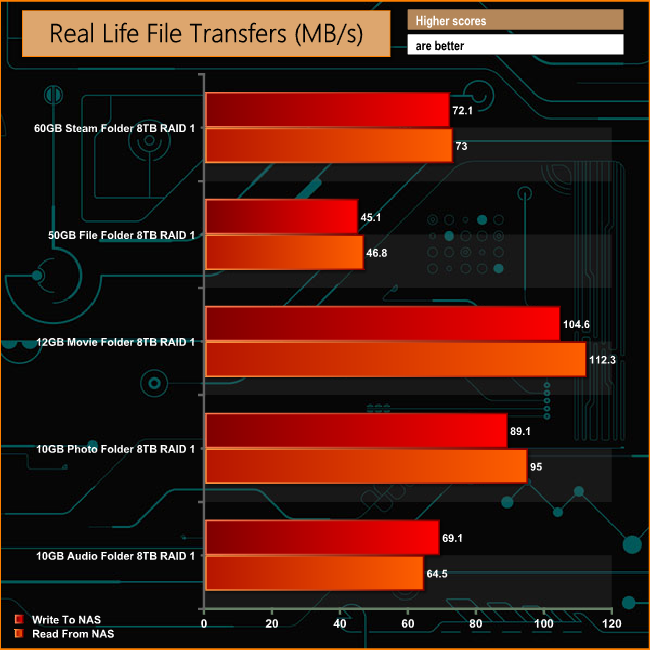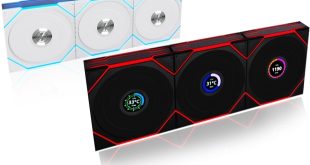The combination of a dual core processor and a gigabyte of DDR3 memory provides the EX2 Ultra with some decent performance. A quick blast with the CrystalDiskBenchmark gave Sequential Read/Write scores of 102MB/s and 107MB/s respectively. Using IOmeter to test the backup and restore speed of a 100GB test partition, the EX2 Ultra gave a score of 85MB/s for the backup and 89MB/s for the restore.
When tested with Intel’s NASPT benchmark, the EX2 Ultra gave scores of around or above 100MB/s for the HD record and playback tests but it wasn’t as good dealing with small files as shown by the Directory copy and photo album scores.

As for real life performance, we used the FastCopy utility to give a time as well as a MB/s speed to copy several folders to and from the NAS. A 60GB Steam folder (29,521files) took 12m 19s (72MB/s) to write to the device and 12m 10s (73MB/s) reading back from it. A 50GB file folder (28,523 files) took 17m 17s (45MB/s) to write and 16m 40s (46MB/s) back the other way.
Media wise a 12GB Movie folder (mix of Blu-ray and 4K files) took 2m (104MB/s) and 1m 52s (112.3MB/s) to write to and read from the device respectively, a 10GB photo album (mix of .png, raw and .jpeg images) took 1m 56 (89.1MB/s) and 1m 48 (95MB/s) while a 10GB audio folder (mix of mp3 and .flac files) took 2m 31s (69MB/s) and 2m 42 (64MB/s).
Noise and power
At first glance the EX2 Ultra appears to be passively cooled but on deeper investigation there is a tiny cooling fan behind the front bezel and although it’s not overly loud you can certainly hear it spinning away when you get close up to the device but having said that in a normal everyday environment it’s really not an issue. As for power usage it’s pretty frugal. It measured 13W at the wall when idle, and when tested with CrystalDiskMark it rose to a peak of 18W for both Reads and Writes.
 KitGuru KitGuru.net – Tech News | Hardware News | Hardware Reviews | IOS | Mobile | Gaming | Graphics Cards
KitGuru KitGuru.net – Tech News | Hardware News | Hardware Reviews | IOS | Mobile | Gaming | Graphics Cards




